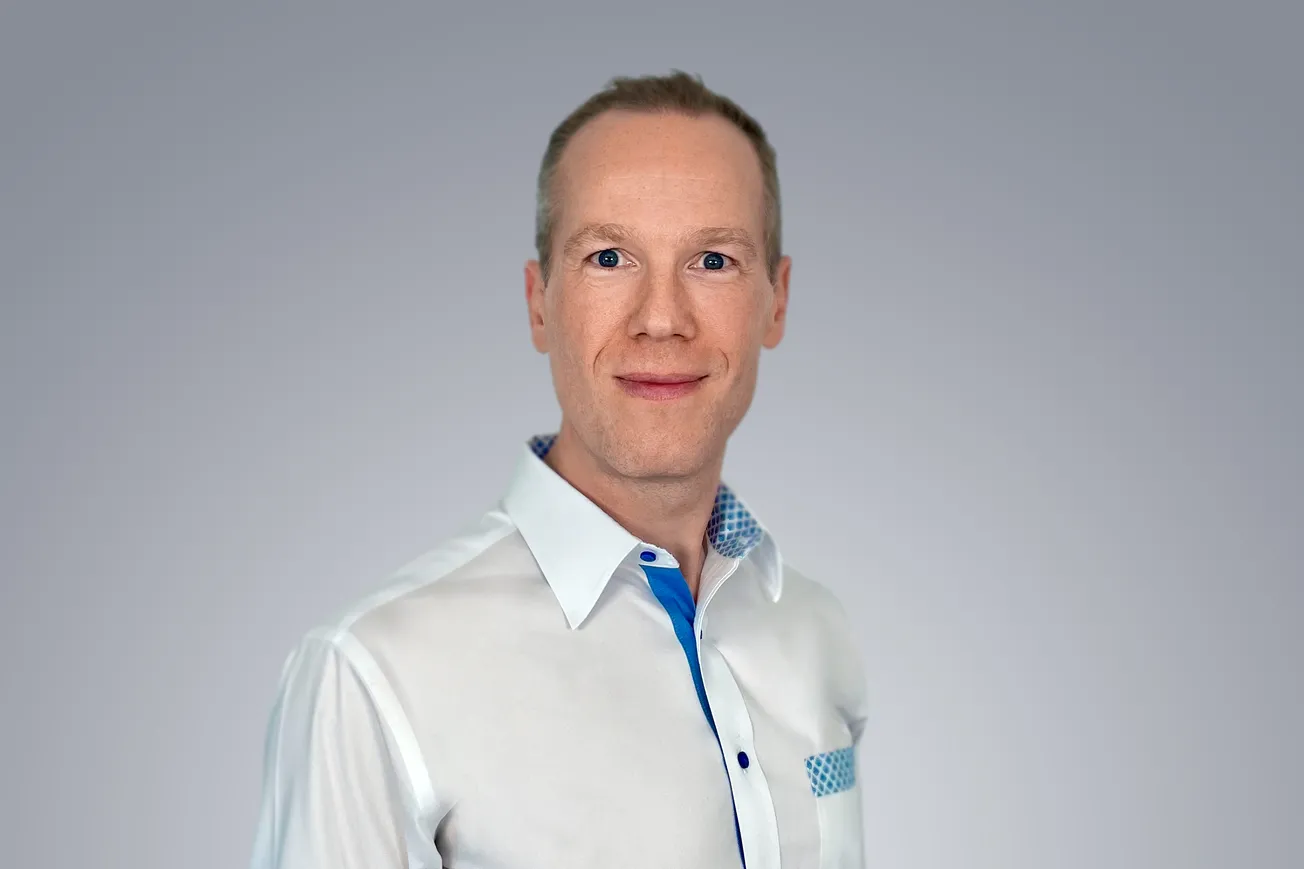Table of Contents
Charles Cadieu, CEO of Spiritus, sat down with Onyx for a feature-length interview.
To start, could you tell us what Spiritus does, and what direct air capture is?
Spiritus is in the business of carbon removal. We help customers remove CO₂ from the atmosphere—whether that’s to offset hard-to-abate industrial emissions, or emissions they can’t otherwise eliminate.
We do this via direct air capture, which, as it sounds, means grabbing CO₂ right out of the air and storing it underground for the long term.
What’s special about our approach is that it’s more economically accessible than previous methods, so we can apply it to a broader set of carbon-management problems. The idea of taking CO₂ straight out of the air and putting it back underground is a silver-bullet strategy for many climate challenges.
It’s basically a “like for like”: you pull carbon out of the ground, burn it, put CO₂ in the air, and then we capture it and store it back underground.
A lot of major backers - Khosla Ventures, Aramco, Mitsubishi, TDK - see our technology as ahead of the pack. They understand climate tech deeply and see that our approach is uniquely differentiated from a cost and efficiency standpoint.
It would be great to hear about the inception of Spiritus. How did you and your co-founder meet, and how did you end up teaming up for direct air capture?
Matt and I have known each other for about 20 years through family connections. He’s a brilliant material scientist with a PhD in hierarchical structured materials, spent time at Los Alamos National Lab doing some remarkable national defense work.
I come from an AI and neuroscience background—I co-founded a company called Caption Health, which was acquired by GE Health in February of 2023.
After that acquisition, I started exploring big problems worth solving. Direct air capture kept popping up in the literature, but the cost issue was always the sticking point. A lot of chemistry-based solutions were out there, but how could we make them into a physically efficient material that handles huge volumes of air? That was the missing link.
When I spoke with Matt, he’d been working on a new way to produce these hierarchical materials cheaply and at scale. It was so new that I had to go through security clearance to hear the full details.
That was the lightbulb moment. We realized we might have the key to our problem. And that’s how we launched Spiritus.
Direct air capture is known to be one of the most expensive ways to remove CO₂. How is Spiritus tackling this?
That’s certainly the core challenge. You’ve got various carbon-removal methods out there—biochar and so forth—but many of them aren’t scalable or have impacts on biomass, short carbon cycles, and so on. Going back to that “like for like” approach we advocate for: if you took carbon out of the ground originally, the best place to put it back is underground.
The reason direct air capture is so hard, and often costly, is that CO₂ is only around 400 parts per million in the atmosphere—a tiny fraction. You have to separate that small amount of CO₂ from the rest of the air, which is why people say it’s always going to be too expensive.
Our solution is a breakthrough material—our “sorbent.” We sometimes call it an “artificial fruit” because it soaks up CO₂ from the air without large fans. We just place these apple-sized sorbent pieces on trays out in what we call our “carbon orchard.” Over a couple of hours, they absorb CO₂ from ambient air.
To me, this is akin to what the Wright brothers did—solving the right engineering problem. Back then, people said heavier-than-air flight was impossible. They cracked it by figuring out how to control lift. We’ve tackled the key problem of air capture: low CO₂ concentration.
Once that’s solved, the rest becomes manageable.
Let's talk about the sorbent. You mentioned it’s like a fruit?
Yes, and they’re about the size of a golf ball or slightly larger. We use hundreds of thousands of them, laid out in trays across a field—our carbon orchard. The sorbent absorbs CO₂ over a couple of hours, after which we move it to desorb the CO₂ in just a few minutes. Then it's right back out to the field.
It’s a fast, fully automated, continuous cycle—running 24/7. They can do this cycle thousands of times over their lifetime, which keeps overall costs down and improves sustainability.
Could you walk me through how the sorbents are manufactured?
We manufacture the sorbent material at our facility in Kansas City, Garden One. That’s where the core of the process begins. From there, we integrate it into our field systems to ensure we’re operating at a scale that can truly move the needle on climate.
Right now, each facility is deploying around a hundred thousand of these “fruits,” and that’s just the starting point. If you think about the scale of solar farms and how those manufacturing operations grew over time, we’re on a similar trajectory—except instead of harvesting sunlight, we’re harvesting carbon.
What determines where you build these orchards? Is it about where CO₂ levels are highest?
Surprisingly, no. Once you move away from the immediate vicinity of a smokestack, CO₂ levels are basically the same everywhere. The location is dictated by where we can safely and affordably store the CO₂ underground.
We use a well-established process called geological sequestration. You drill a well into a suitable underground formation—imagine an upside-down coffee cup with a sealed lid—and inject the CO₂, where it stays trapped for thousands or even millions of years. The U.S. is geologically blessed in this regard. There’s enough underground storage capacity to handle 500 years’ worth of current U.S. emissions.
So we situate the orchards near these storage wells. That way, once the sorbent has collected the CO₂, we can pump it right underground.
So you're doing all of the capture and storage on the same site?
Exactly. Absorption, desorption, and storage all happen on the same land, directly above the injection well. That makes the system efficient and fully self-contained.
And here’s the best part: because CO₂ mixes evenly in the atmosphere, removing it anywhere helps mitigate emissions from anywhere else. So even if a company’s emissions originate in Southeast Asia, we can offset them with removals in New Mexico or Wyoming. We can support global decarbonization from these U.S. facilities.
Our investors really see the value in this global reach. For example, let’s imagine a company that sources batteries from a factory in Southeast Asia that runs on coal. The buyer may only be one small customer and not influential enough to get that factory to change.
But with our model, they don’t have to wait. They can buy CO₂ removal from us, and we’ll neutralize those emissions on their behalf. We’re already doing this for customers in multiple countries.
Our global reach gives companies control over their emissions, even when the source lies outside their supply chain’s direct influence.
Your investors clearly see great potential in this technology - what do you think they’re betting on?
I think they see this as a scalable solution that fits into the real world. Look, the energy transition isn’t going to be perfect. There are trade-offs. Right now, countries are prioritizing energy security, access, and AI infrastructure. That often means leaning on fossil fuels, at least in the short term.
The difference now versus, say, 15 years ago, is that we’re no longer debating whether climate change is real. Today, the conversation is about how much we prioritize decarbonization versus other needs.
That’s where carbon removal comes in. It allows us to move forward with natural gas, data centers, and industrial supply chains, without blowing through our carbon budget. We can still make progress, and we don’t have to tear everything down and start from scratch.
Our technology gives people and businesses a way to act responsibly today—even in sectors or countries that don’t yet have easy decarbonization pathways.


